Mun Miner Back to Kerbin’s Orbit
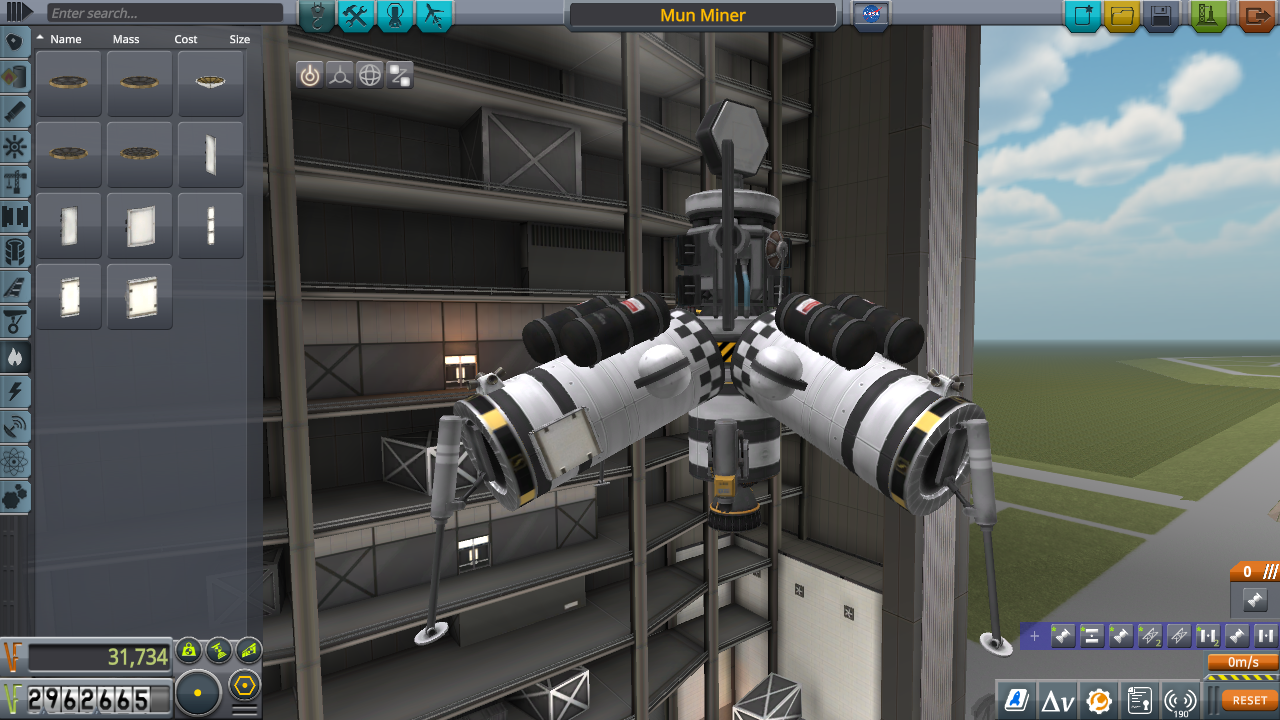
The goal is this mission is pretty simple:
- mine 600 ore units on the Mun
- put them in orbit of Kerbin
To do so, we need the usual converter (ISRU), ore tanks, radiators, batteries, solar panels, drills. The Mun is rotating quite slowly: 6d, compared to roughly 3d for both Duna and Eve. Thus, fuel cells will come in handy! Fuel cells transform a few units of fuel into electric charge. That’s a good thing, what we’re doing here is basically:
- mine ore
- convert ore to fuel
- convert fuel to electricity
- repeat
- ???
- profit
When designing such a lander it’s important to remember the ore we’ll mine has a mass. The first prototypes I created didn’t account for that. I was then stranded on the Mun, unable to reach Kerbin’s orbit anymore. The Δv map for this mission is:
- Mun to Kerbin Orbit (lander): 1750 m/s
- Kerbin to Mun: 4570 m/s
- Mun orbit to ground: 580 m/s
The lander thus needs to have at least 1750 m/s with full ore tanks. The VAB doesn’t do this kind of calculations, it’s needed to do them by hand. Thank you, https://wiki . kerbalspaceprogram . com/wiki/Cheat_sheet.
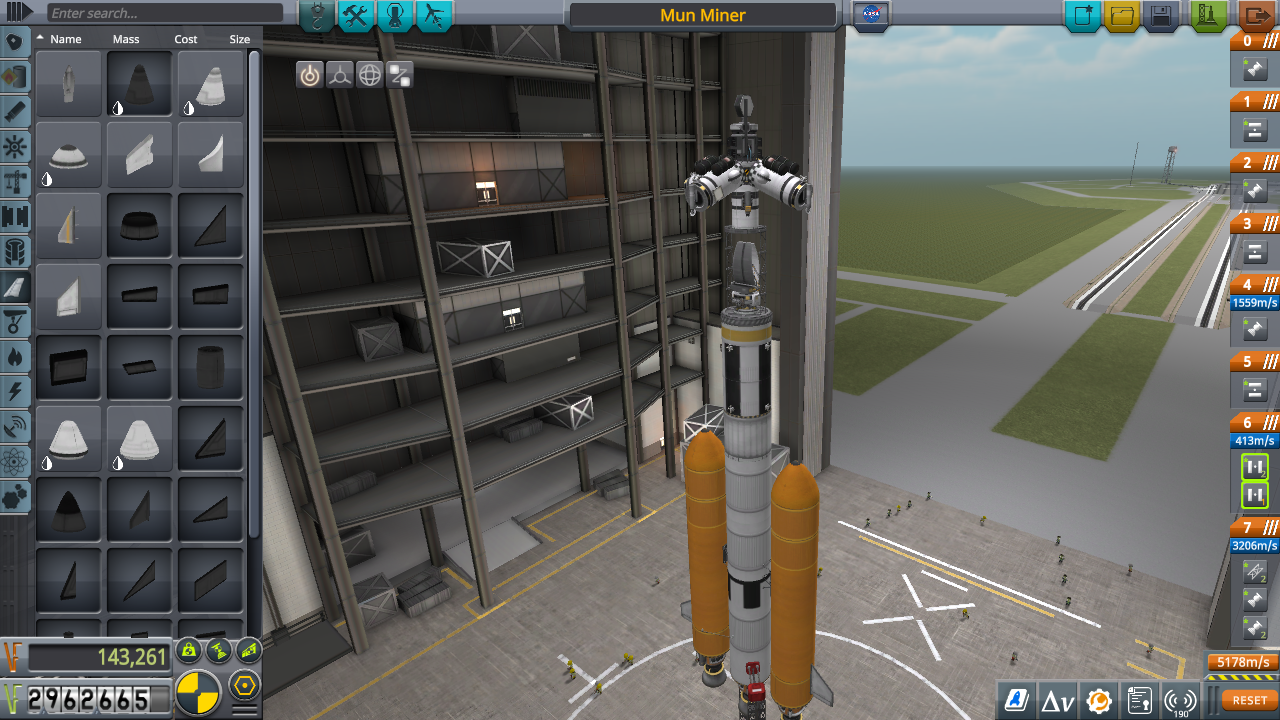
As usual, we need to perform an Orbital Survey before being able to mine. The resources on the Mun aren’t that scarce but it’s always a good thing to land of the most ore-rich spot.
The scanner, that will be put in a polar orbit, embeds xenon tanks and an ion engine. With such a Δv we could go anywhere given the time. The short range scanner on the lander will help us narrow down the location.

The fairing is quite ugly but it works ¯_(ツ)_/¯ Also, I shed some weight off this thing, it had too much Δv.
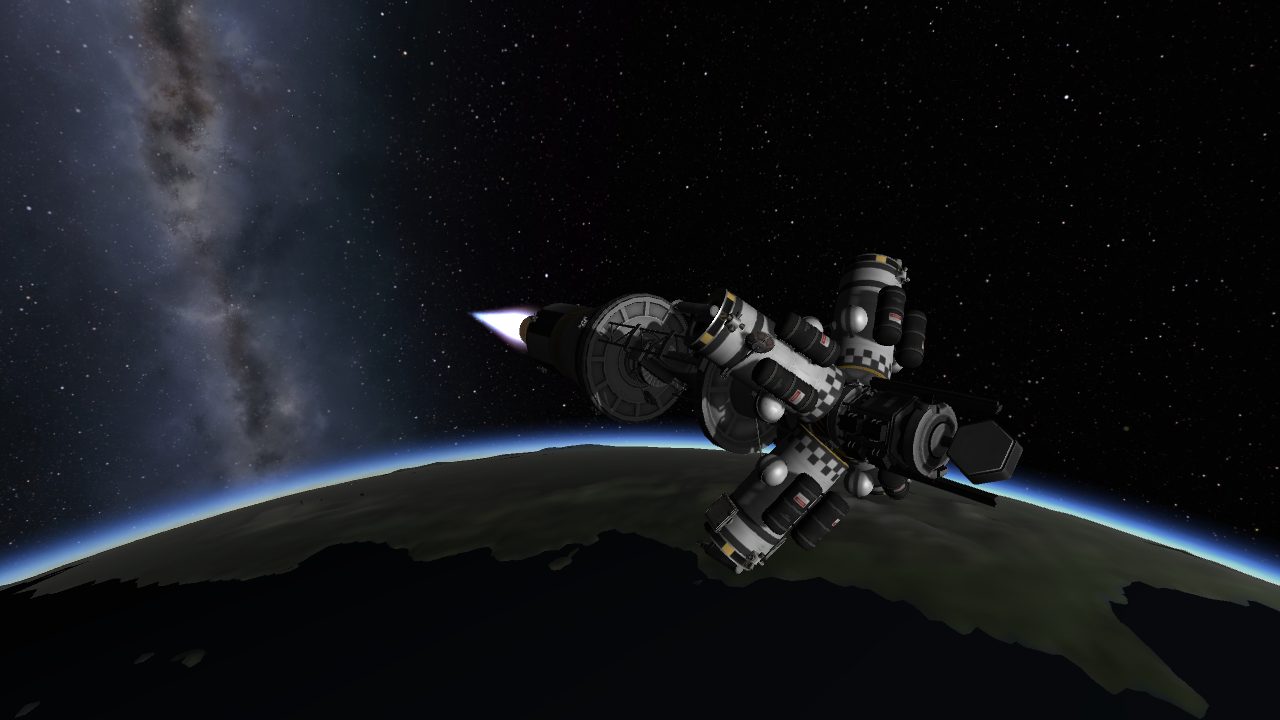
Circularizing around Kerbin using the second stage.
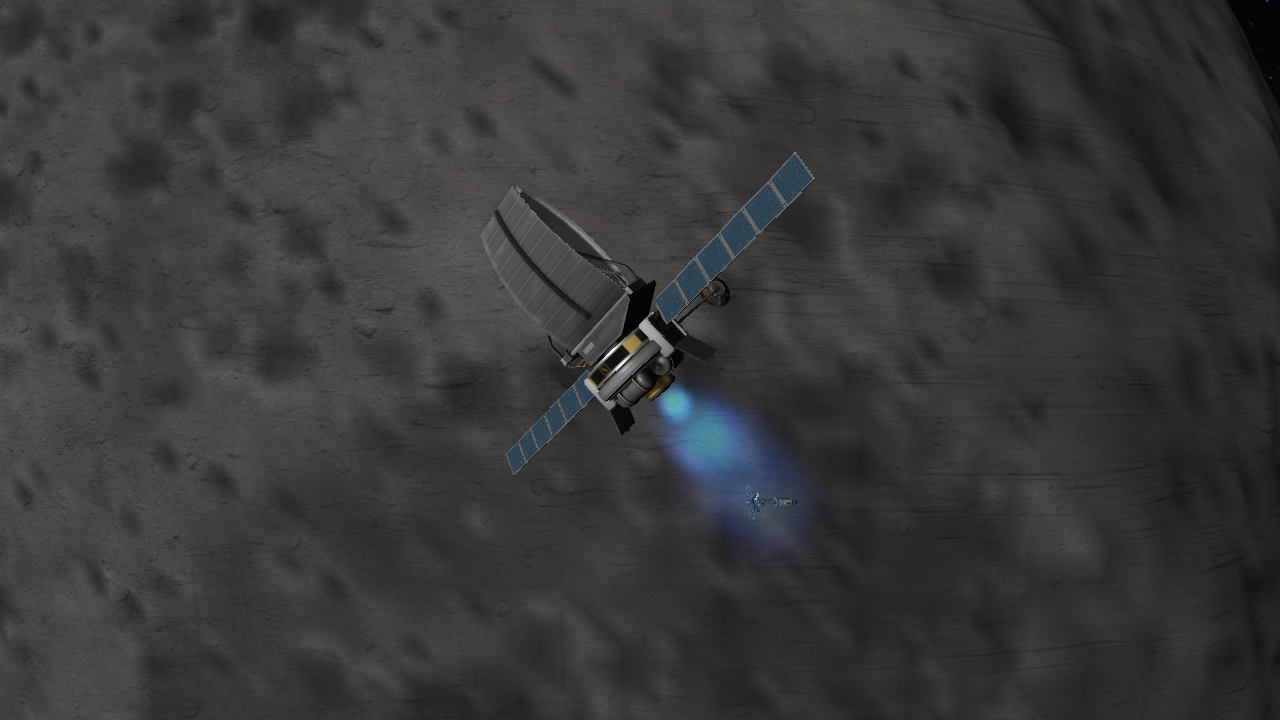
Deploying our first payload around the Mun: our orbital surveyor.
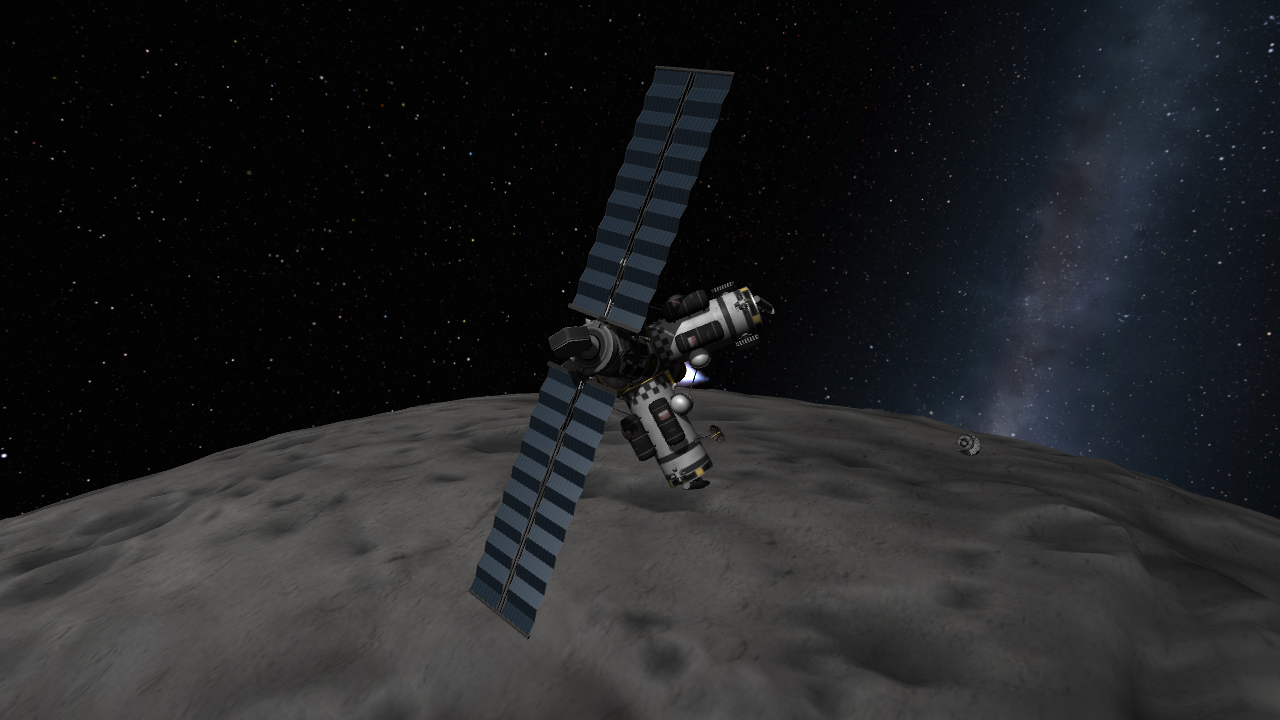
After having picked a spot, we finally can land!
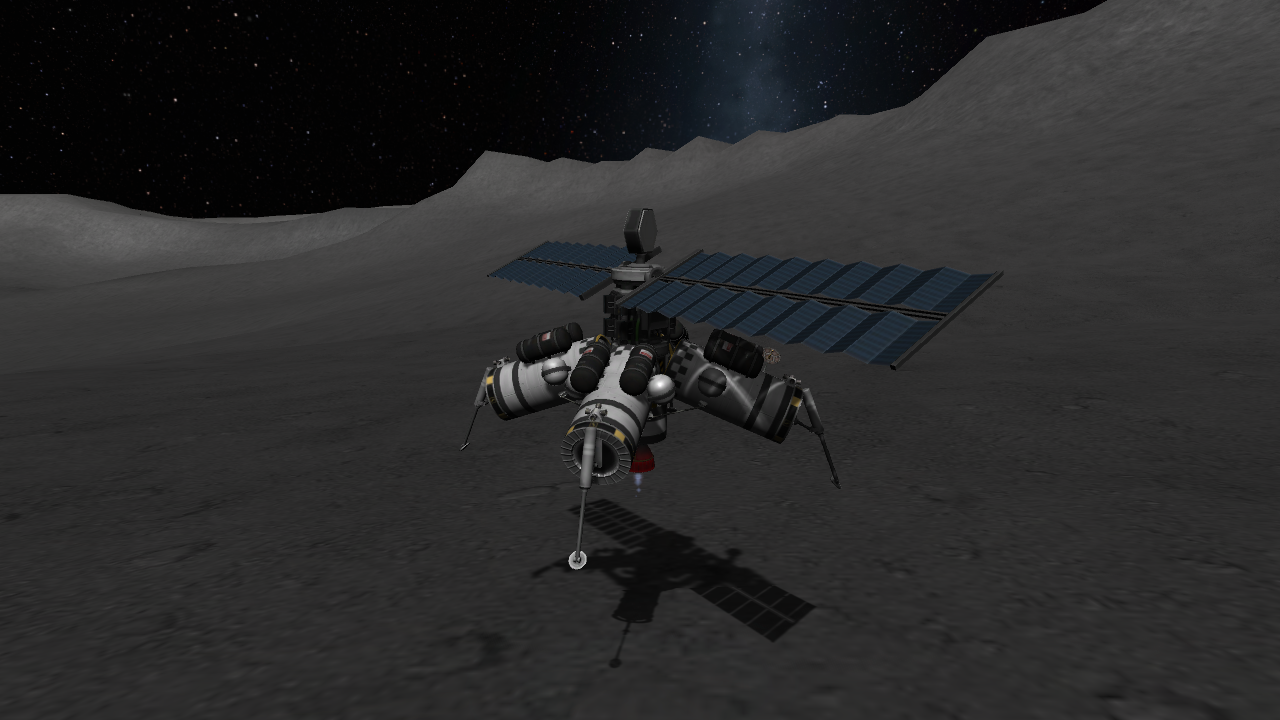
Steady landing at 2m/s.

Time to mine! The fuel cells really do wonders, no need to wait for the solar panels to give us power anymore.
Usually for such missions I’d have to retract one radiator and thus couldn’t run the ISRU and drill at the same time. With fuel cells, this lander has enough electric charge to sustain two radiators, the ISRU and the drill!
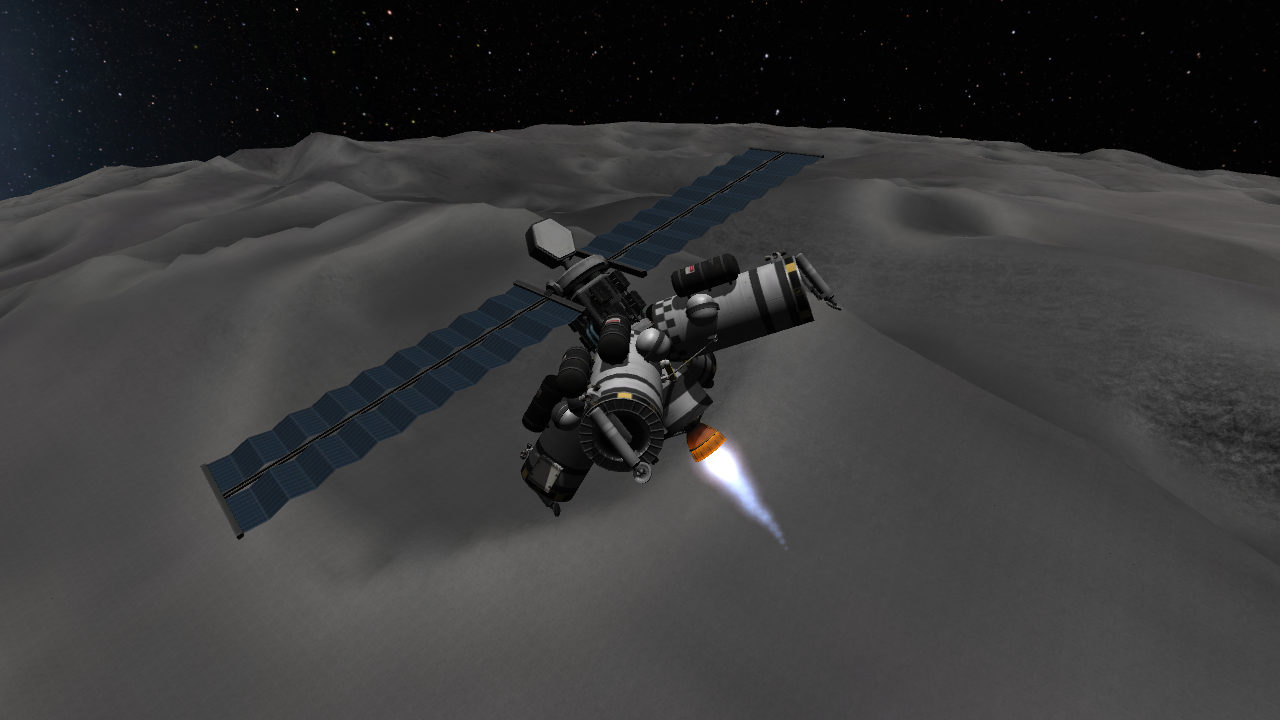
The lander being full, it’s time to go!

In orbit around Kerbin, mission success.
